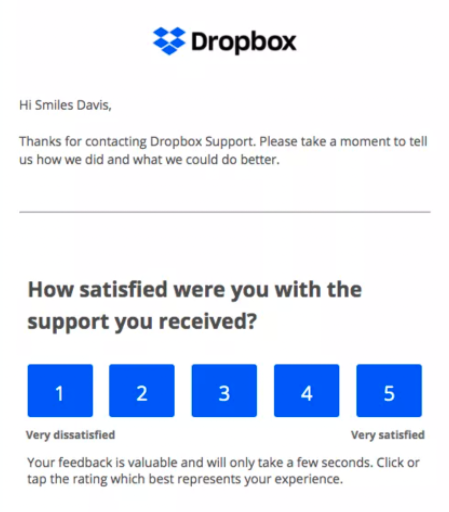Email Marketing: Lead Nurturing vs. Transactional Emails
Email marketing is a complex yet highly-effective and ROI-driven marketing tactic. According to HubSpot, when executed well, email marketing has a whopping 4,200% ROI. That means that email generates $42 for every $1 spent! With this amount of potential, it’s easy to understand why marketers place such a heavy focus on email marketing via lead nurturing emails and transactional emails. The question is, which email technique (lead nurturing or transactional) yields the best results?
The truth of the matter is that both lead nurturing emails and transactional emails are crucial to email marketing success. In this article, we’re highlighting the differences between lead nurturing vs. transactional emails and illustrating how to best leverage each email type to maximize ROI.
What are Lead Nurturing Emails?
Lead nurturing emails typically contain a message intended for commercial purposes like encouraging the reader to read a blog, download a guide, or schedule a consultation. These emails are sent out to large lists of contacts to execute lead nurturing campaigns. Lead nurturing campaigns are automated email sequences that offer up personalized and relevant content to leads that take them through their buying journey.
For instance, say a new lead comes into your CRM database because they downloaded a white paper on best practices for optimizing SEO. Knowing that you have a surplus of resources on SEO, you can create a lead nurturing campaign that will automatically share all of this relevant content with the new lead in a set cadence. For example, the lead could receive an email every 8 days. Additionally, any new lead that comes through your CRM by downloading this white paper, can be added into this lead nurturing campaign.
Below is an example of the types of content and calls to action that would fit in this automated lead nurturing email campaign:.png?width=1200&name=Mo%CC%88ve%20Blog%20Graphic%20(6).png)
The Importance of Automated Lead Nurturing Email Campaigns
Automated email marketing campaigns are great for retaining customers, lead nurturing, and keeping prospects engaged. By leveraging workflows to send out emails on a “set it and forget” basis, email marketers are better able to keep their database engaged with their brand without manual input. Essentially, after the initial creation and setting up of the email campaign, all you need to do is choose specific criteria to trigger the workflow and you’re all set! The email campaign will automatically begin for each contact that triggers it.
Furthermore, lead nurturing emails benefit sales teams as well. Consider this example. By using sales tools like HubSpot, sales reps can see which emails have been sent to leads and determine which types of content a lead has already engaged with. From here, the sales rep has a better understanding of whether a lead is more inclined to convert into a customer. This insight helps sales reps prioritize leads and enables them to determine which leads are ready to speak with sales. For example, if a lead denotes that they want to receive a free demo by filling out a form through a lead nurturing email, the sales rep will be notified that this lead is ready to be contacted.
Lastly, automated email campaign workflows allow you to create specific criteria around which leads get certain emails based on triggered actions. For instance, say a lead already watched a video on the benefits of data services for Kubernetes. To ensure this lead doesn’t get sent the same material twice, you can set up a workflow where this lead (and others who have also watched the video) skips the email that showcases this video and automatically receives the next email.
What are Transactional Emails?
Transactional emails differ from lead nurturing emails in that they are one-to-one emails that complete a transaction or process the recipient has started. For example, say a lead fills out a form to download an ebook. Within five minutes of submitting the form, the lead receives a thank you email with the downloadable file of the ebook. This is a transactional email. Let’s take a look at another example below. In this example above, this automated transactional email is sent only to one person, not the entire database. Here, the recipient, “Smiles Davis” contacted Dropbox Support and so Dropbox sent Smiles Davis with a survey to learn more about what they can do to improve their customer experience from Smile’s point of view.
In this example above, this automated transactional email is sent only to one person, not the entire database. Here, the recipient, “Smiles Davis” contacted Dropbox Support and so Dropbox sent Smiles Davis with a survey to learn more about what they can do to improve their customer experience from Smile’s point of view.
Why are Transactional Emails Important?
Ultimately, transactional emails are game-changers for ensuring a positive customer experience. In fact, transactional emails have a higher open rate than lead nurturing emails and are especially beneficial when it comes to building trust between your customer and your brand. This trust is built by following through on your brand’s promise.
For example, if a customer makes a purchase, they expect to be emailed a confirmation of their purchase in a timely manner. If your organization doesn’t follow through and the confirmation email is never sent, then the customer is likely to lose trust in your brand (and worry if their order was ever placed). However, if a transactional email is set up to automatically send a personalized confirmation message upon purchasing, trust will begin to build. Therefore, the greater the trust you’ve built with your customers, leads, and prospects, the more likely they are to engage with your company.
Additionally, transactional emails are a great way to reactivate customers based on behavioral triggers. Think about your own experience with transactional emails. There’s undoubtedly been a time where you were online shopping, adding items to the cart, and then closed the window without buying anything. A few hours later, you probably received an email with a subject line similar to “You left these items in your cart.” This type of email re-engages potential buyers and keeps your brand top of mind.
Final Thoughts
While lead nurturing and transactional emails have their differences, one thing remains the same: both are imperative to the overall success of marketing initiatives. If you’re looking for help with creating lead nurturing campaigns, transactional emails, and other types of marketing emails, we got you covered.
Let’s talk to discuss how Möve Marketing can help make your 2022 your best year yet.




